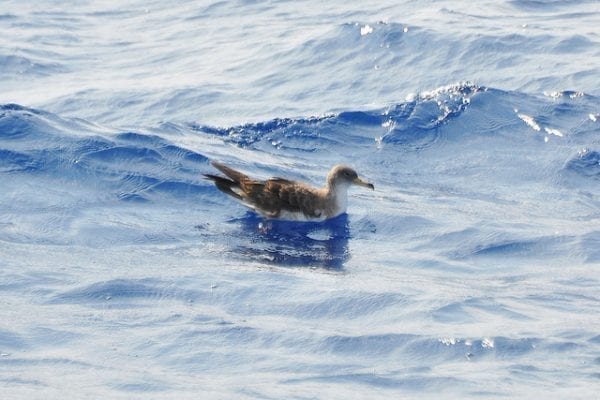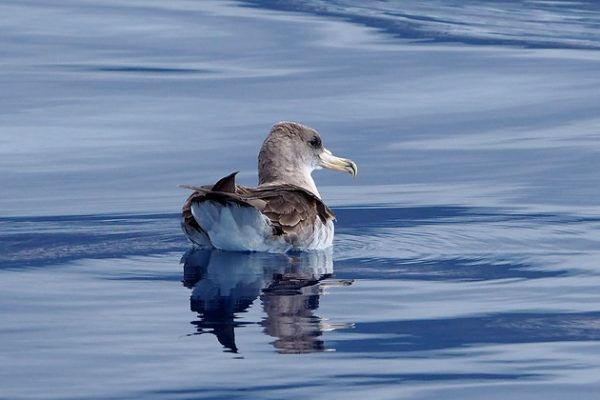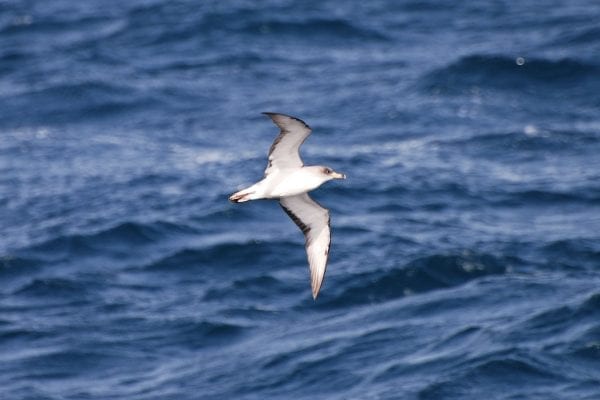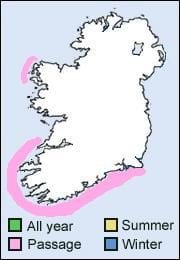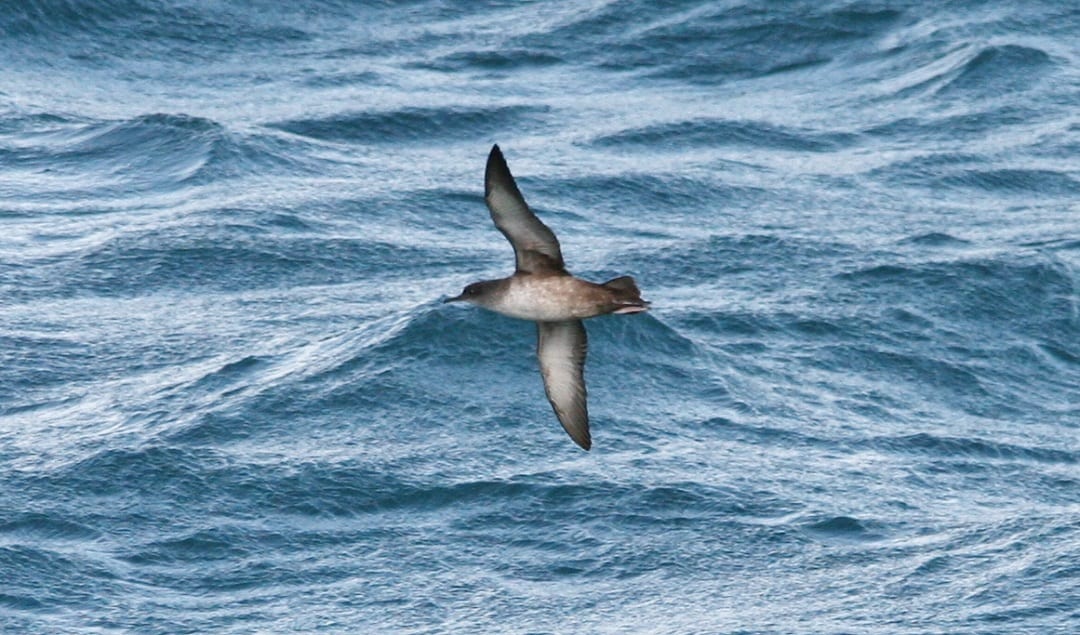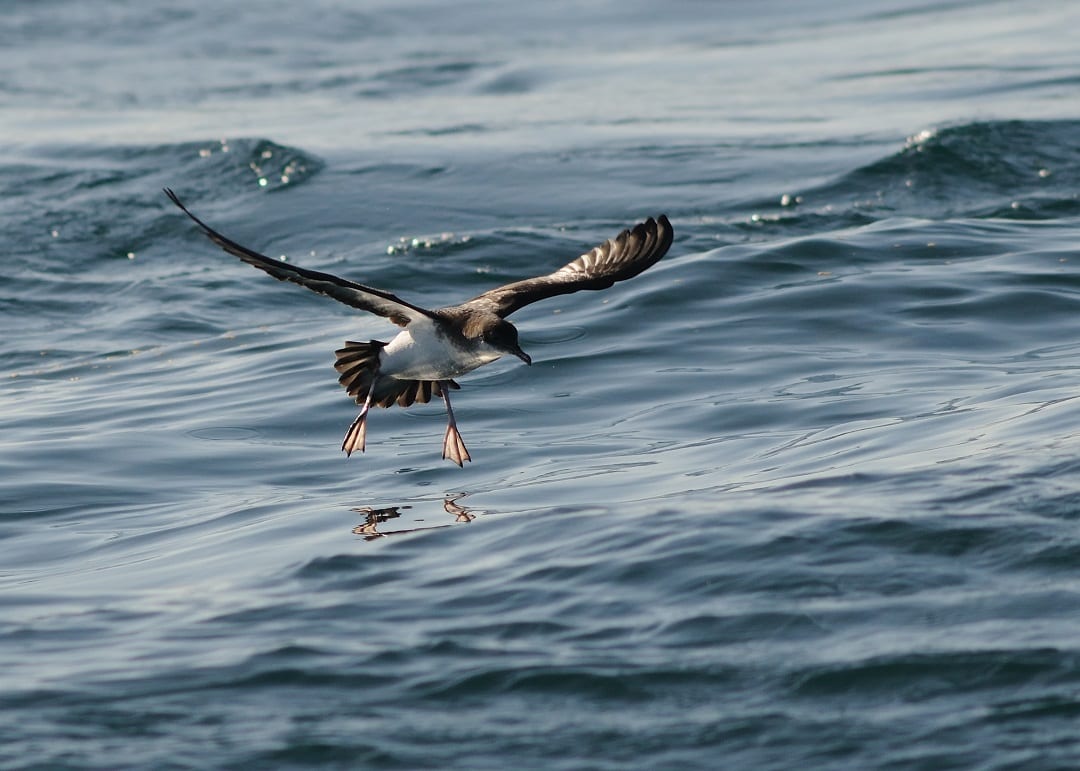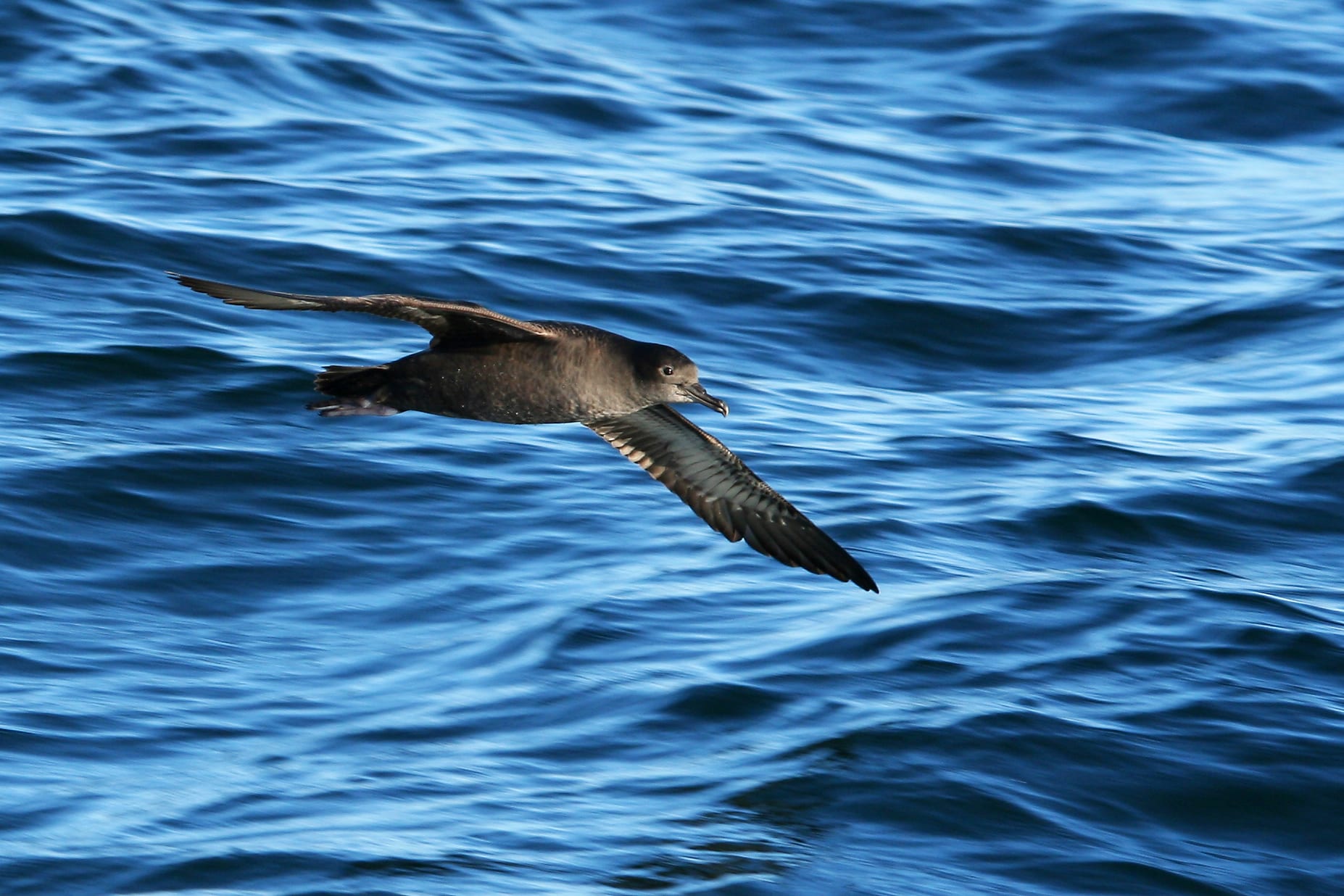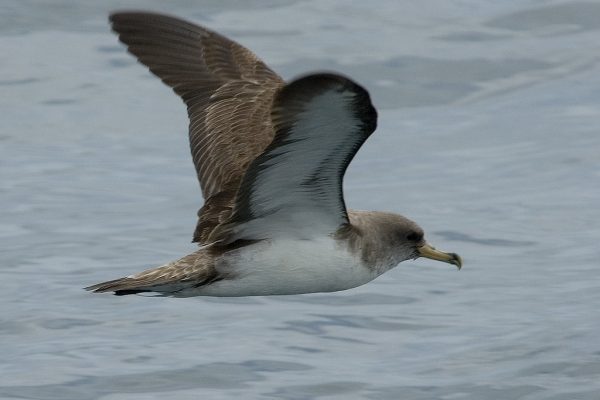
Cory’s Shearwater
| Irish Name: | Cánóg Cory |
| Scientific name: | Calonectris diomedia |
| Bird Family: | Tubenoses |
amber
Conservation status
Conservation status
Status
Passage migrant in variable numbers off southern and western coasts from July to October.
Identification
The largest shearwater species seen in Irish waters, being almost twice the size of the much commoner Manx Shearwater. Like that species, Cory's Shearwater has white underparts. The upperparts (head, back and rump) are a light brown while the wings are a contrasting darker brown/black. At close range and in good light, the large yellow bill can be seen. Distinguishable from Manx Shearwater almost on flight-style, having a much more relaxed flight action which includes long glides on bowed wings interspersed with only a few slow flaps of the wings. In poor conditions, confusion with Fulmar (similar size and flight action) is possible.
Voice
Silent on migration
Diet
Cory’s Shearwaters mainly feed on fish such as Herring, as well as squid and crabs. Will take offal disposed from fishing vessels.
Breeding
Cory's Shearwater breeds in large colonies on inaccessible islands in the Mediterranean, as well as the Canary Islands. In recent years, single individuals have been recorded at Manx Shearwater colonies in Ireland and could potentially breed in Ireland.
Wintering
Winters on the open ocean of the South Atlantic and (rarely) the Mediterranean.
Monitored by
SeaTrack.

